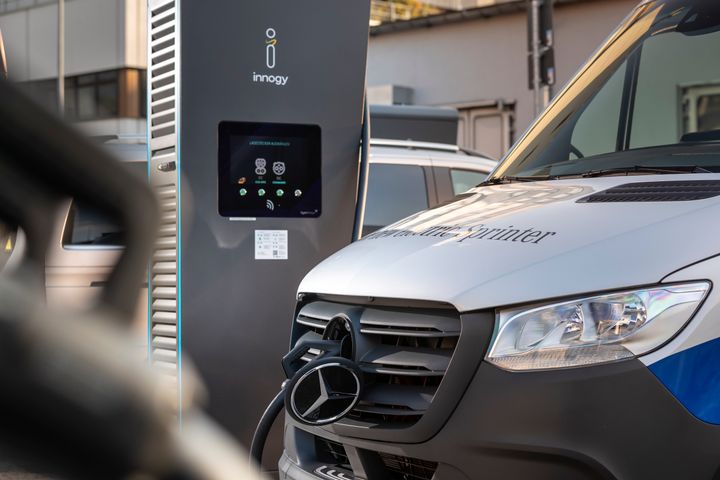Mercedes-Benz Debuts eSprinter in Germany
The van is also available to commercial customers who deliver goods locally emission-free, drive to the building site, or take care of maintenance work.
As the second commercial model after the eVito, the new Mercedes-Benz eSprinter was presented to the trade press in six large German cities Dec. 9-17. The vehicle is not yet available in the U.S.
The van is also available to commercial customers who deliver goods locally emission-free, drive to the building site, or take care of maintenance work.
The new Mercedes-Benz eSprinter is intended to cover the broadest possible range of use in urban logistics. Accordingly, it is initially being offered as a panel van and a permissible gross mass of 3,500 kilograms. Its maximum loading volume is 10.5 m3, the same as for the Sprinter with a combustion engine.
As with the entry-level diesel engine, the electric drive in the eSprinter drives the front wheels with an output of 85 kW and a torque figure of up to 295 newton metres. A flexible payload and battery concept moreover allow adaptation to individual needs for practical use.
The range with a utilisable battery capacity of 47 kWh (installed: 55 kWh) is 168 kilometres, with a maximum load of 891 kilograms. A second battery option takes into account other priorities in the use parameters: the configuration with a utilisable capacity of 35 kWh (installed: 41 kWh) allows a range of 115 kilometres. In turn, the maximum load rises to 1045 kilograms.
The integrated quick-charge function also ensures flexibility, thanks to which around 80% of the energy can be recharged within 30 minutes. The maximum speed can be configured to suit the task in hand: Maximum speed can be set at 80 km/h, 100 km/h or even as much as 120 km/h.
It is important to many vehicle fleets and fleet operators to carry out a precise analysis of feasibility, economy, and efficiency before switching to electric drives. Typical driving profiles, operating times, ranges as well as charge times are decisive parameters here — and require a holistic consideration. As part of its eDrive VANs strategy, Mercedes-Benz Vans has tried to establish an ecosystem for the individual mobility revolution. Significant points of the service include advice on the selection of the vehicle, support with new tools, and consideration of the overall running costs.
With its eVan Ready App and the eCost Calculator, Mercedes-Benz Vans has created tools that allow employers and drivers to use recordings of all journeys over a certain time period to find out whether an electric vehicle is suitable for their area of use.
Source: https://www.fleetforward.com
FLEET MANAGEMENT AUDIT
Fleet management is the use of a set of vehicles in order to provide services to a third-party, or to perform a task for our organization, in the most efficient and productive manner with a determined level of service and cost.
Fleet management activities are shown in the following graph 1:

Graph 1: fleet management activities
The proposal audit analyses and assesses all fleet management activities shown in the graph 1, and its main goals are:
- Know the overall status of the fleet management activities
- Provide the analysis, the assessment, the advice, the suggestions and the actions to take in order to cut costs and increase the efficiency and efficacy of the fleet management activities
With the information obtained, we’ll elaborate a report that holds the overall status of the fleet management as well as the suggestions, recommendations and the measures to take in order to cut costs and optimize the fleet management activities.
CLICK ON THE FOLLOWING LINK TO DOWNLOAD THE PROPOSED FLEET MANAGEMENT AUDIT:



